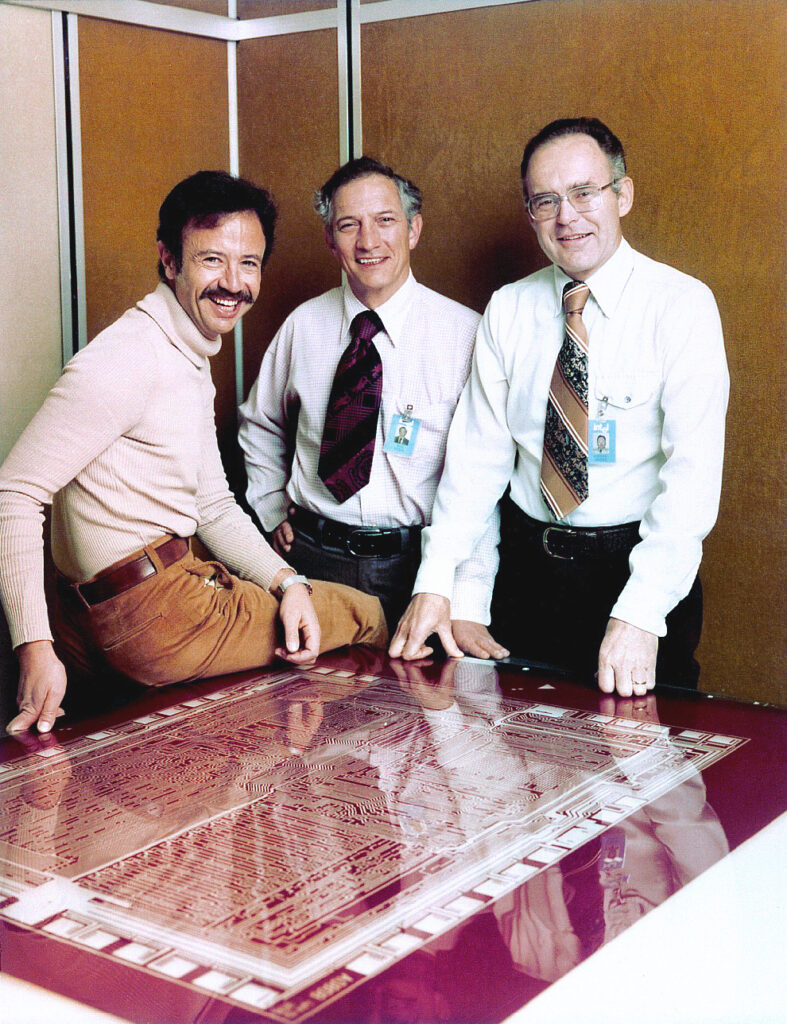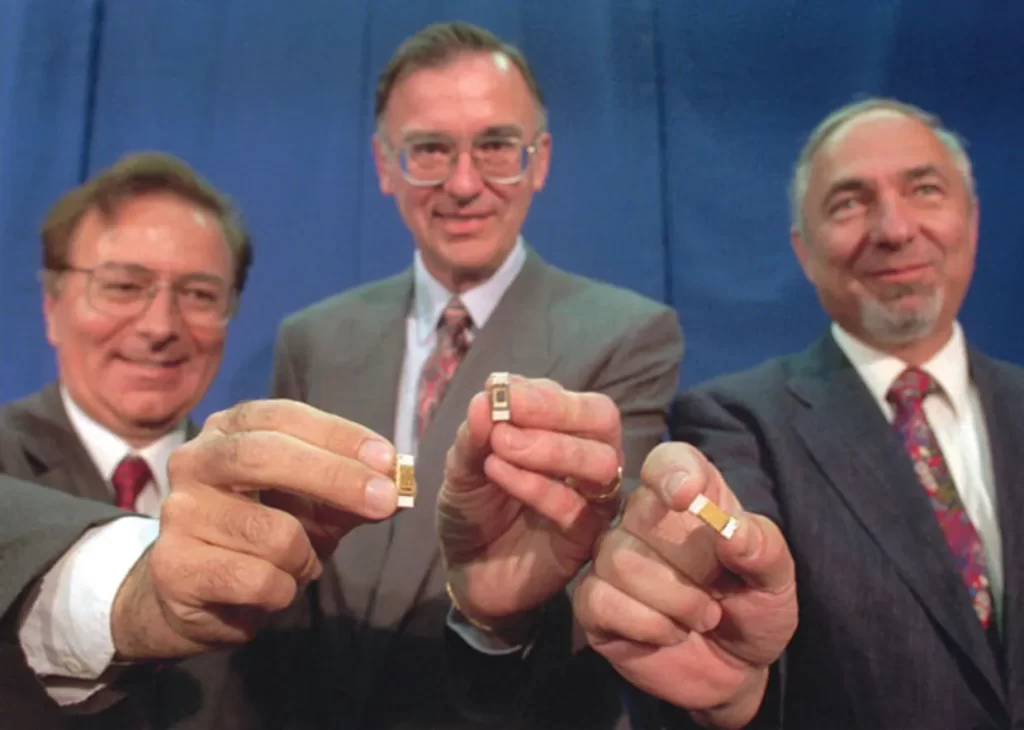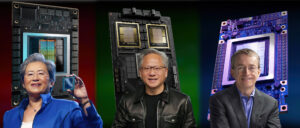Introduction:
In an era dominated by technological marvels, there exists a book that promises a riveting journey—one that takes you on an immersive expedition into the heart and soul of Silicon Valley, the birthplace of innovation.
Within these pages, you’ll uncover a treasure trove of captivating stories, multifaceted personalities, and groundbreaking discoveries that have not only shaped our modern world but continue to influence it.
Here are 8 compelling reasons why you should Read The Intel Trinity.
1. The Traitorous Eight: Champions of Innovation
At its core, “The Intel Trinity” is a compelling chronicle of innovation, anchored by the daring exploits of a group known as the Traitorous Eight. Their journey is one of unwavering determination in the face of adversity, ultimately leading to the creation of Fairchild Semiconductor. This pivotal moment in history ignited an era of unprecedented technological progress, leaving a lasting impact on the world.
Picture this, if you will: It was the year 1957, a time when job security was a treasured commodity. In a bold and daring move, eight brilliant minds, undeterred by the prevailing norms and risks, made a decision that would forever change the course of history. These individuals had honed their skills and knowledge at Shockley Semiconductor Laboratory, and their ambitions soared higher than any corporate ceiling could contain.
However, when they sought employment together as a united force, they were met with resistance and closed doors. Yet, it was precisely this adversity that ignited their collective courage and innovative spirit. Rather than succumbing to the barriers placed before them, they chose to forge their own path. It was in this audacious act that Fairchild Semiconductor was born—a company that would become the crucible for transformative ideas and groundbreaking technologies.

Read more: The Curse of Shockley: How Toxic Leadership Sparked a Technological Revolution
2. Robert Noyce: The Pioneer of Integrated Circuits
Imagine the audacity: a tiny chip replacing an entire room of electronic machinery. Noyce’s vision led to smaller, faster, and more efficient devices. The integrated circuit paved the way for today’s microprocessors.
Yet, Noyce’s impact extended beyond innovation. He fostered Silicon Valley, uniting visionaries. His journey, culminating in a Nobel Prize, shows the human spirit’s capacity to dream, persevere, and leave an enduring mark.
The Intel Trinity reminds us of Noyce’s brilliance and the boundless potential within each of us to shape the future through imagination and determination.
3. Gordon Moore’s Enduring Law
Moore had a prophetic vision: transistors on a chip would double every two years. This idea became the seed of a technological revolution.
Imagine the power: predicting exponential device capabilities. Moore foresaw relentless innovation. Year by year, this law pushed the semiconductor industry to pursue miniaturization and greater computing power.
Moore’s Law became more than just an observation; it became a guiding star for the tech world. It laid out a roadmap for progress, propelling humanity forward into a future where the once-unimaginable became reality. It fueled our collective imagination and propelled us to build devices that fit in our pockets yet possess computing power that rivals the machines that once occupied entire rooms.
Read more: How Gordon Moore Built the Most Important Company on the face of earth
4. Andy Grove: The Visionary CEO
The Intel Trinity talks about The Andy Grove. Grove understood that in the world of technology, change was not a choice but a necessity. Through periods of rapid growth and seismic technological shifts, he guided Intel with a steady hand, ensuring that the company remained at the forefront of the semiconductor industry.
But Grove’s leadership was not solely about navigating through the storms of change; it was about embracing those changes and transforming them into opportunities. His emphasis on adaptability and the relentless pursuit of innovation were not just corporate strategies; they were guiding principles that propelled Intel to become an industry giant.
Grove’s legacy extends far beyond the walls of Intel. His leadership set an example for Silicon Valley as a whole. He demonstrated that with the right vision, determination, and a willingness to embrace change, entire ecosystems could thrive and lead the world into a new era of technological progress.
Read more: From Refugee to CEO: Andy Grove Intel Story
5. Intel 8080: The Genesis of Microcomputers
In the year 1974, the world was introduced to the Model 8080 microprocessor, a technological marvel that would change the world in ways no one could have predicted. This 8-bit chip was not just another innovation; it was a pivotal catalyst that kickstarted the microcomputer revolution, reshaping the very landscape of computing as we knew it.
The Model 8080 was a quantum leap forward in computing technology. Its compact size and remarkable capabilities opened the doors to personal computing, a concept that was once considered the stuff of science fiction. It marked the moment when computers ceased to be unwieldy, room-filling machines, and began their transformation into devices that could fit on a desk or even a person’s lap.
This profound shift in computing technology wasn’t just about hardware; it was about democratizing access to computing power. The Model 8080 paved the way for personal computing, making it accessible to individuals and small businesses. It ignited a spark of creativity and innovation that continues to shape our lives to this day. The Intel Trinity covers the journey of 8080 in detail.
6. Dynamic Personalities at the Helm of The Intel Trinity
Within the intricate tapestry of The Intel Trinity, the three key figures—Robert Noyce, Gordon Moore, and Andy Grove—emerge as not just leaders, but as a triumvirate of contrasting personalities and leadership styles that formed a dynamic and incredibly successful synergy. Their unique attributes were like pieces of a puzzle that, when assembled, unlocked the door to Intel’s unparalleled growth.
At the heart of this triumvirate was Robert Noyce, a man whose affable nature and charm were as legendary as his technical prowess. Noyce possessed the remarkable ability to connect with people on a personal level, fostering a work environment where collaboration and creativity thrived. His reluctance to engage in conflicts and his knack for diplomacy made him the glue that held the team together. Noyce’s warmth and approachability not only endeared him to his colleagues but also contributed to the overall positive atmosphere at Intel.
In sharp contrast to Noyce’s affability, Andy Grove was a leader characterized by his no-nonsense, decisive approach. Grove was a man of action, unafraid to make tough decisions and lead with a firm hand when necessary. His leadership style was marked by a relentless focus on efficiency and results, qualities that were instrumental in driving Intel’s growth during pivotal moments of its history. Grove’s unwavering determination to achieve objectives set a high bar for excellence within the organization.
Between Noyce’s people-oriented leadership and Grove’s results-driven approach, there existed a dynamic tension, a balance that was crucial to Intel’s success. And in the midst of this dynamic duo stood Gordon Moore, the technical genius who bridged the gap. Moore’s deep understanding of the technical aspects of the semiconductor industry, combined with his visionary thinking, served as the guiding light for Intel’s innovation.

7. Intel 4004: The Microprocessor Trailblazer
The significance of the Intel 4004 cannot be overstated. Prior to its arrival, computing was often a cumbersome and space-consuming affair, with machines occupying entire rooms. The 4004, however, condensed this power into a form factor that could fit in the palm of your hand. It was a technological marvel that revolutionized the electronics industry, setting a new standard for what was possible.
This groundbreaking innovation was not just about size; it was about accessibility and democratization of computing power. The Intel 4004 paved the path for a future where computers would become not just tools of the elite but everyday companions, accessible to individuals and small businesses alike.
As you explore the story of the Intel 4004, you will undoubtedly feel the heartfelt resonance of a momentous breakthrough. It was a testament to human ingenuity, a manifestation of our relentless pursuit of progress. The tiny chip that emerged in 1971 wasn’t just a piece of hardware; it was a catalyst for change, a symbol of the boundless potential that exists within us to shape the future. The Intel Trinity covers these unsung heroes.

Masatoshi Shima, Federico Faggin, Ted Hoff, and Stanley Mazor are among the unsung heroes who contributed significantly to Intel’s success. For instance, Faggin and Hoff played instrumental roles in the development of the Intel 4004 microprocessor.
Read more: How Intel won the race to develop first microprocessor
8. Intel 8086: The Architectural Legacy
In the year 1981, the world was introduced to the Intel 8086, a microprocessor that featured the groundbreaking x86 architecture. Little did anyone know that this unassuming chip would become the bedrock of personal computing for decades to come, shaping the technological landscape for generations.
The Intel 8086 was not just another chip; it was a pivotal point in the evolution of computer history. It laid the foundation for compatibility and software development, two pillars upon which the modern computing world was built. This microprocessor was more than just a piece of hardware; it was a catalyst for a revolution.
The x86 architecture, introduced with the 8086, allowed for a level of compatibility and software portability that was unprecedented. It meant that software written for one x86-based computer could run on another, regardless of the manufacturer. This standardization opened the doors to a flourishing ecosystem of software developers, each contributing to the ever-expanding world of computing.
The Intel 8086 was more than just a technological innovation; it was a symbol of the relentless march of progress. It was a testament to human ingenuity, the spirit of innovation, and the power of a shared vision. This microprocessor became the beating heart of countless personal computers, enabling people to work, learn, and communicate in ways that were once considered unimaginable.
Conclusion:
The Intel Trinity transcends the confines of history; it is a heartfelt journey that celebrates the relentless spirit of innovation and the profound impact of visionary leaders. It underscores the importance of collaboration, innovation, and resilience in the face of adversity. As you delve into these captivating narratives, you will gain a profound appreciation for the individuals and ideas that have forever altered our lives.
Whether you are a fervent tech enthusiast, a history buff, or simply curious about the boundless potential of human ingenuity, this book is an unmissable read. It serves as a powerful testament that sometimes, it is the confluence of diverse talents and a shared vision that propels us toward greatness. Silicon Valley’s story is not merely about technology; it is an ode to the indomitable spirit of innovation and the unwavering pursuit of a brighter future.



